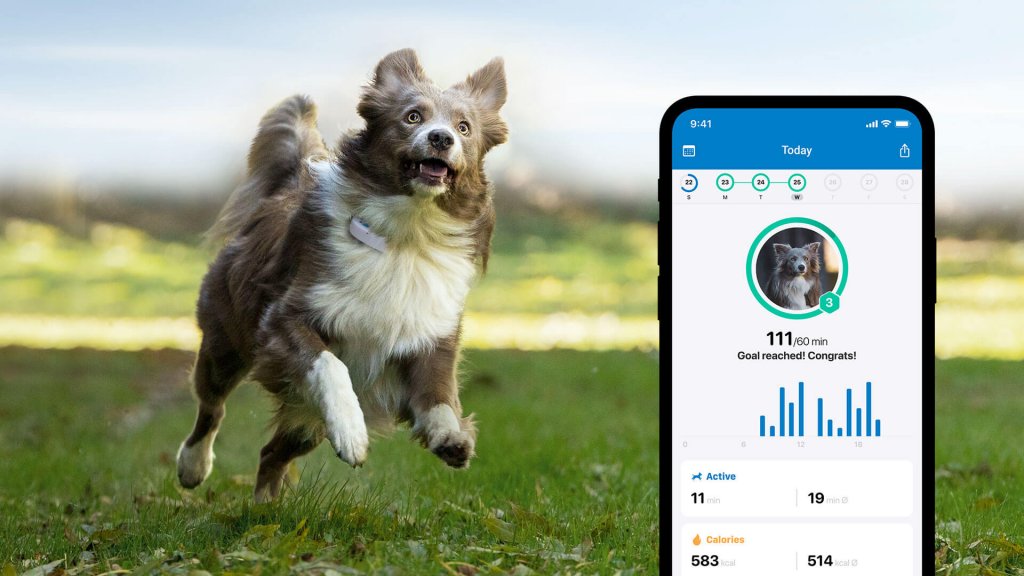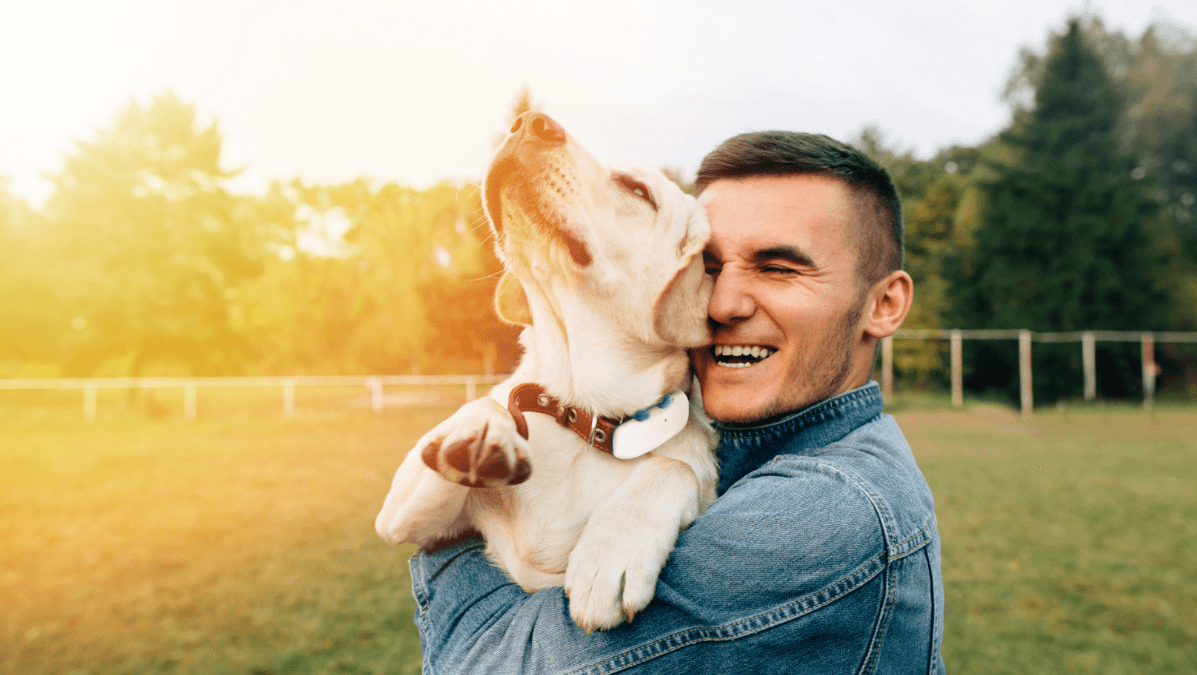Dog Park Etiquette: How To Follow Dog Park Rules And Make Your Visit Enjoyable
Visiting a local dog park can provide opportunities for play, exercise and socialization for your pup. Here are some tips for ensuring a positive experience at the dog park and avoiding unsafe situations.
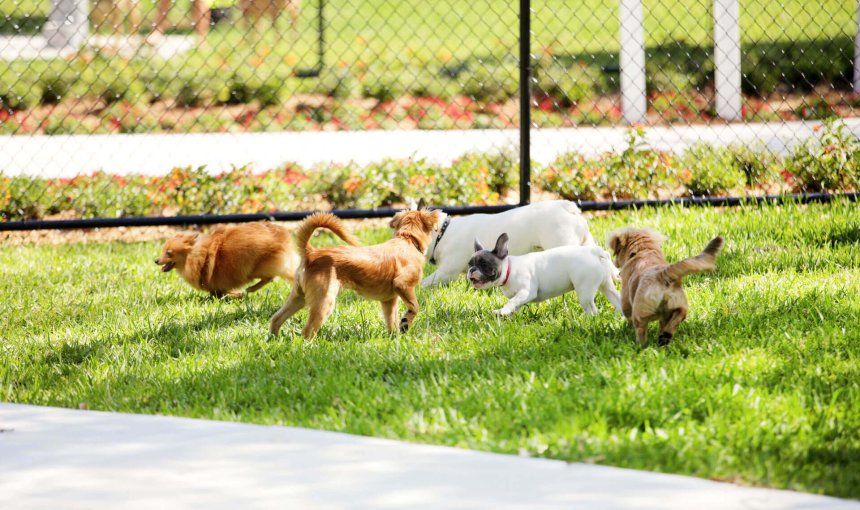
The freedom of running off-leash and playing with other dogs at the dog park might be a slice of heaven for your pup – or it might be their worst nightmare. Enjoying the dog park takes planning, preparation, knowing your dog’s personality, and following the written and unspoken rules of dog park etiquette.
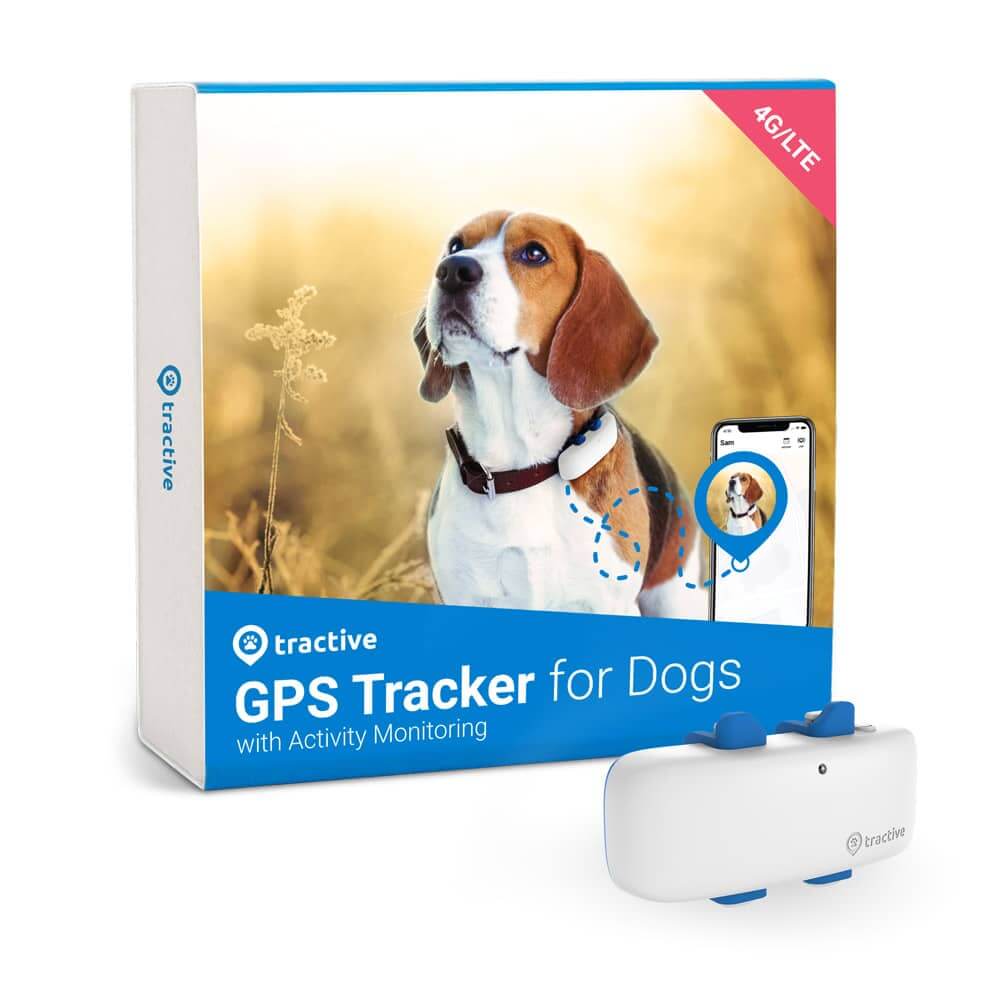
Always know where your dog is
Follow every step in real-time with unlimited range. Get alerts if they wander too far. Keep them happy & healthy with Wellness Monitoring. And let others – like walkers or sitters – keep an eye on your dog too.
Check the dog park’s requirements, rules and fees
Before bringing your dog to the local dog park, find out what is required of you and your pup. Some parks are free, while others require a membership or one-time fee. Many parks require that your dog be licensed, collared, and vaccinated, too.
It’s smart to scope out the park in advance, without your dog. Are there separate areas for small and large dogs? Is there a pond or pool for water play? Is there a double gate to provide safe entry and exit? Does the park provide doggie waste bags and a disposal bin, or do you need to bring your own bags and pack out waste? Some parks feature obstacle courses, which are great for agility training.
The dog park should be clean and the fences should be in good repair. Most importantly, the dogs and their owners should be well behaved and follow generally-accepted dog park etiquette. If the park seems lacking in any of these areas, you may want to look for another park.
Most parks post signs with dog park rules, but the most important rule is that you are responsible for your dog and your dog’s behavior. Paying attention to your dog during the entire visit is the #1 rule of dog park etiquette.
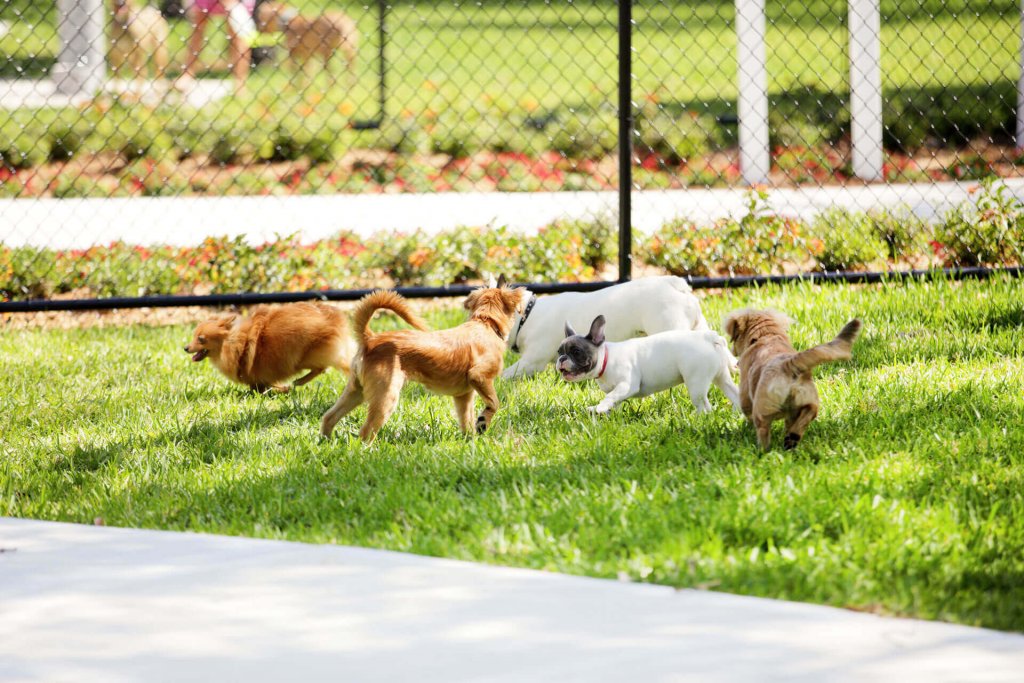
Is your dog in the right condition to visit a dog park?
Before visiting a dog park, it’s important to decide if this activity is right for your dog. The weather, your dog’s age, and your dog’s condition may help you make the call.
Don’t take a puppy under 12 weeks old to the dog park
Not only are small puppies vulnerable to being injured during rough play with larger dogs, but puppies also are not fully vaccinated. This makes the little guys susceptible to vaccine-preventable diseases that can be transmitted by other dogs. Depending on your dog’s lifestyle and overall health, you may want to wait until they are 18 weeks old before visiting a dog park. If in doubt, check with your veterinarian.
Don’t bring a female dog in heat or a pregnant female to the dog park
When hormones are high, you are inviting unwanted attention by bringing your dog to the dog park. The mating instinct is extremely powerful and you may end up with an unwanted litter of little pups! It’s good dog park etiquette to keep female dogs in heat at home as well as pregnant dogs. If you don’t want to breed your dog, talk to your veterinarian about spaying or neutering your dog.
If your dog is sick, don’t go to the dog park
It’s bad etiquette for humans to spread germs around, and the same is true for dogs. If your pooch is exhibiting signs of a contagious illness such as kennel cough, skip the visit to the dog park until they have recovered. Kennel cough is spread through airborne droplets, shared water bowls, and by touching noses. It’s easy to see why dog parks are a prime spot spreading this illness.
Is it too hot or too cold outside?
Dogs can be very active running off-leash at the dog park, so if outdoor temperatures are high, keep a close eye on your pup so they don’t get overheated. Otherwise they could suffer from heat stroke in dogs. You should also limit outdoor time in cold weather. Most dogs can tolerate chilly temperatures, but once the thermometer dips below freezing (32 degrees F or 0 degrees C), it’s best to keep most dogs indoors. Small dogs in particular lack the body mass to retain heat in cold weather.
Find out: How cold is too cold for dogs?
Know your dog
A trip to the dog park is a feast for your dog’s senses and a chance for them to make new friends. But for some dogs, being surrounded by strange people, smells, and dogs can be very stressful. You know your dog’s personality best – are they ready for the full dog park experience, or do they need a gradual introduction?
Practice recall with your dog
Having a well-trained dog is the ultimate in dog park etiquette. At a minimum, you must train your dog to come when called (known as recall). If your dog reliably comes when called, you can avoid unpleasant situations like fights, bullying, and escapes at the dog park. When your dog is well trained, they know that you are the alpha and have confidence in your leadership.
Other behaviors to include in your dog’s training repertoire are “down” and “stay.” If your dog is a little rusty on these basic commands, practice for a few weeks at home to reinforce the training before visiting the dog park. Once your dog is in the distracting environment of the dog park, your training will pay off and be a shining example of good dog park etiquette. As a bonus, you won’t need to play “catch me if you can” when it’s time to go home.
Track your dog’s body language
As your dog starts interacting with other pooches at the dog park, it’s good etiquette to observe the temperaments of the other dogs in the park. You can easily read a dog’s body language to determine if they are playful, upset, or angry. Here’s what to look for:
- Playful dogs spin around, bounce, and display a relaxed “play grin.” A “play bow” with the rump held high and front elbows on the ground is a good sign that a pooch is in a joyous mood during a dog play session!
- Anxious or upset dogs hold their tails low or between the legs and their ears may be pinned back. These dogs are feeling stressed or overwhelmed, so take them home and try visiting again on a less-busy day.
- Angry dogs are tense, with the head held high and ears pointing forward. They may snarl with the lips curled back. This dog is not displaying good dog park etiquette! Call your pup to your side and go home if you see this type of behavior in your dog or another pet.
Actively oversee your dog
You may be tempted to scroll through social media or chat with other pet parents at the dog park. That’s not good dog park etiquette. Instead, pay attention to your dog at all times. Situations can change quickly during dog play, especially when the dog park is crowded with off-leash dogs of all sizes and temperaments (see “Angry Dog” note above). It’s OK for you to run and play with your dog at the dog park. Remember, interacting with you is your dog’s favorite thing to do!
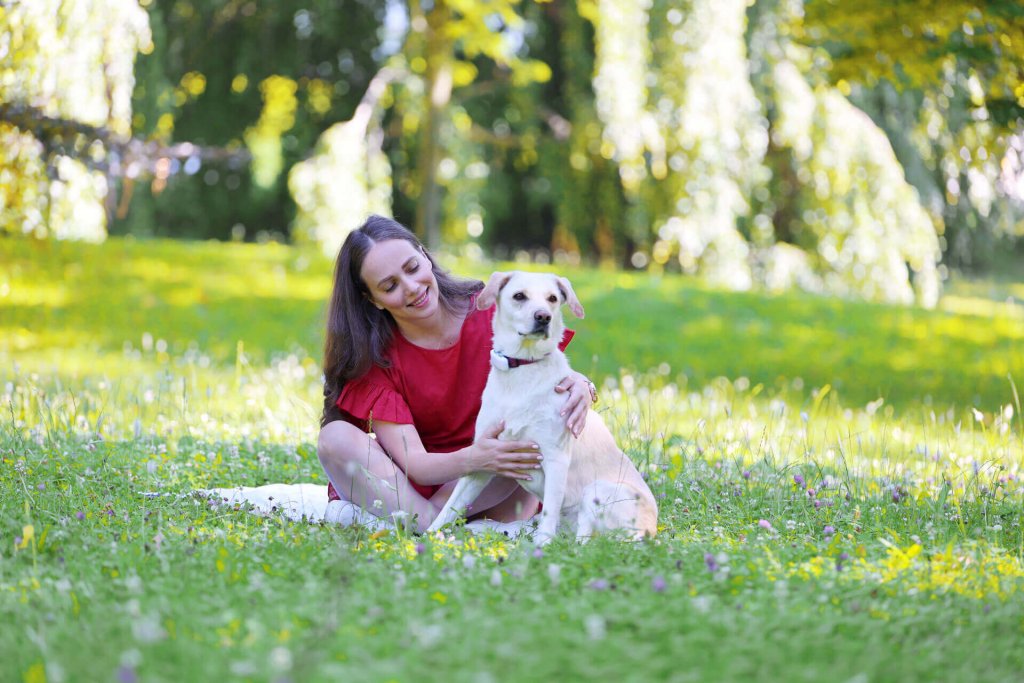
Dog park necessities
Just like any outing, it’s important to plan ahead and bring the right gear for a successful dog park visit.
Bring water
Your dog will get thirsty after romping at the dog park. Bring your own water and a collapsible bowl so your pup can rehydrate after a dog play session. You’ll reduce the risk of your dog catching kennel cough or other diseases that can be transmitted at communal drinking facilities.
Find out: How much water does your dog really need in a day?
Bring dog waste bags and pick up after your pet
It’s good dog park etiquette to pick up after your pup immediately after they do their business. Bring waste bags in case the dog park does not supply them, and plan to carry the waste home if the park’s disposal bins are full.
Use a GPS dog tracker
Another important tool for your trip to the dog park is a GPS tracker like Tractive GPS, so you can keep tabs on your dog at all times. If your furry buddy disappears for even just a few minutes, you’ll have peace of mind knowing you can locate them in the app and use the real-time tracking feature to follow your dog’s every step. Plus, see how much activity your dog gets running around the dog park with activity monitoring for dogs or even compete with the local dogs in your area.
Avoid bringing treats or toys
Do not bring any food or treats into the dog park. Even if the treats are tucked into your pocket, all the dogs in the park will immediately know where they are and come to sniff you. This may be cute until the dogs start disagreeing over who gets the treats. Leave the treats at home or in the car, and offer one to your dog after you leave the dog park. While in the park, give heaps of verbal praise instead of treats each time your dog comes when called.
Toys can be a source of doggie disputes, too. It’s best to leave toys at home, especially if your dog tends to vigorously guard their personal belongings.
Dog park behavior
You’ll see all kinds of dogs at the dog park, and all types of behavior. Pay attention to your dog and read their body language as they interact with other dogs. This can ensure that the dog park visit is fun and beneficial for you and your dog.
Allow positive play with other dogs
Dogs of similar sizes and temperaments may play well together. Your dog may instantly run off to play with others, or you may need to formally introduce your dog to a new friend. Check with the other dog’s parents first to make sure they are OK with a doggie play date. And always ask before petting someone else’s dog.
Barking is OK at the dog park. As long as your dog is playing with others (or with you) in a positive manner and is exhibiting good dog park etiquette, allow the play to continue.
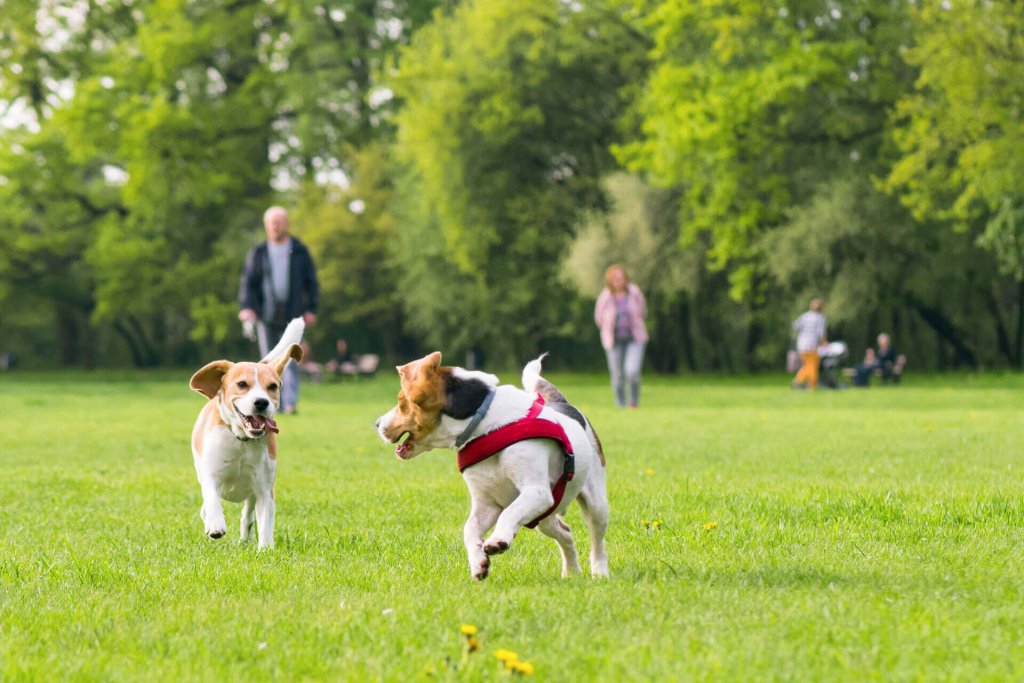
Stop your dog from bullying other dogs
A bully is no fun to be around, for people or for dogs. Remove your dog from any situation where your dog (or other dogs) exhibits bullying behavior.
Bullies are pushy, aggressive, and overly rambunctious. They may employ dominance behaviors such as placing their paws and head on the shoulders of other dogs, excessive mounting, or pinning other dogs to the ground.
If your dog tends to be a bully, the dog park is not the place to teach them good dog park etiquette. Leave the dog park so you don’t put other people or dogs at risk. Work on basic obedience training at home or get help from a professional to eliminate bullying behavior.
Remove an uncomfortable dog
Shy dogs may not enjoy the commotion of a dog park, and you’ll know it by their body language. Instead, shy dogs may benefit from socializing with one or two other dogs in the neighborhood for a few weeks before tackling the dog park. Avoid visiting during busy periods, like Sunday afternoons, if your dog needs a quiet introduction to the dog park.
By watching your dog’s body language, you’ll know when they are ready to leave the dog park. If your dog comes to stand by your side or at the gate, they are giving you a not-so-subtle hint that they are ready to go home. It’s good dog park etiquette to leave when your dog is ready.
Keep your initial visits short
On your first few visits to the dog park, plan to stay for a very short time. Stay just long enough to get a feel for your dog’s interest level, the other dogs in the park, and pick up on the park’s overall vibe. Once you become a regular at the park, you’ll find that 30- to 60-minute play sessions at the dog park are enough to tire out your dog.
In the end: Does your dog actually like going to the dog park?
Dog parks are not the best option for every dog, so don’t be disappointed if your dog does not enjoy these outings. There’s no point in making your dog miserable by insisting on weekly visit to the local dog park. Instead, try some other outdoor activities such as hiking in natural areas, longer walks in the neighborhood, or agility training.
No matter what the activity is, spending quality time engaged with your pup is the best way to build a lifelong bond and develop a strong foundation for positive behavior. That’s good doggie etiquette!
